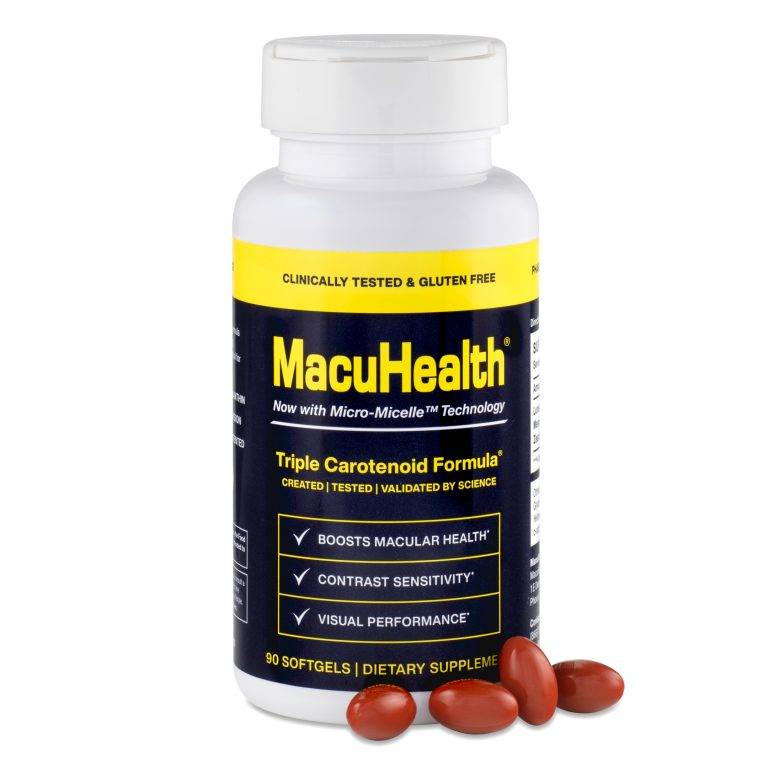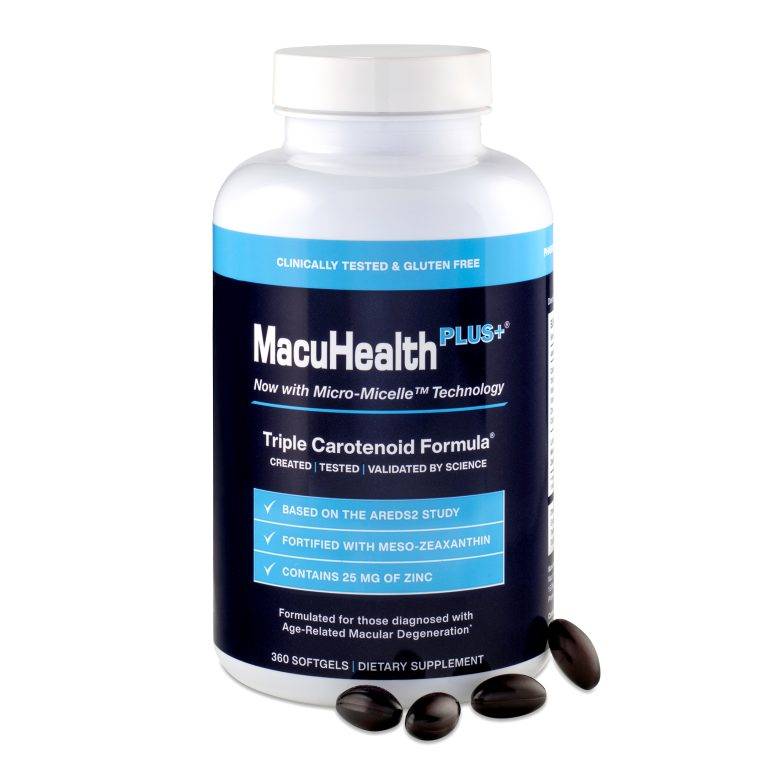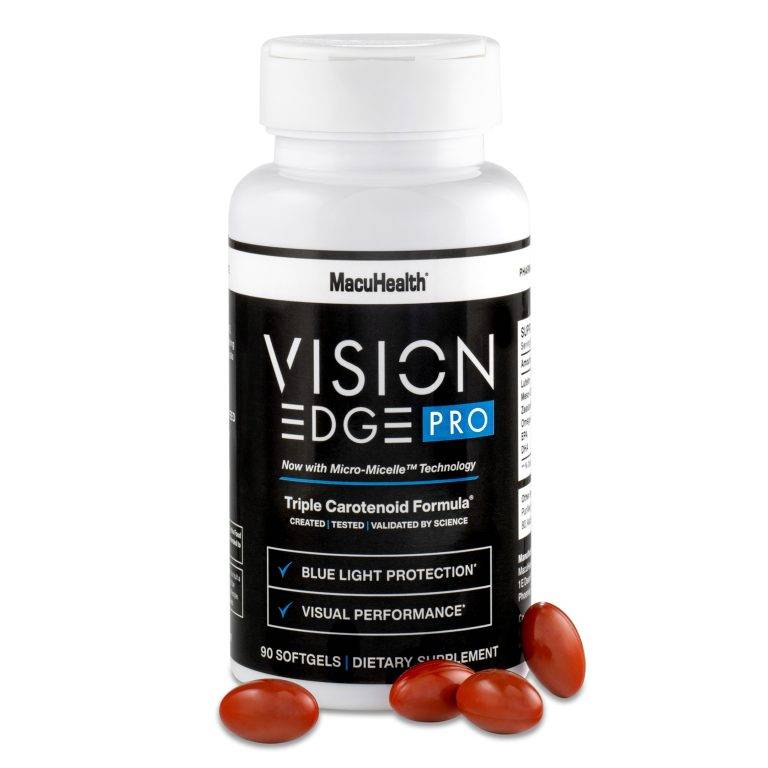SUBSCRIBE AND SAVE! | SIGN ME UP!

Written by MacuHealth
Reviewed by Jim Stringham, Ph.D.
Do carrots boost your eyesight? Scientific American published an article that puts an end to the debate.
What was their conclusion? Carrots are rich in the carotenoid beta-carotene; the body converts beta-carotene into vitamin A, which can improve your vision under certain conditions, such as a vitamin A deficiency. And while vitamin A is vital to prevent blindness and maintain the health of the cornea (the clear front of the eye), there isn’t a definite answer on how many carrots it would take to improve one’s vision.
But other vegetables are shown to boost eyesight because of the nutrients they contain. Broccoli, corn, squash and dark green leafy vegetables like spinach and kale are rich in the carotenoids Lutein and Zeaxanthin. These are two of the three carotenoids deposited in the central retina (called the “macula”), where they accumulate to form the macular pigment. These nutrients have a yellow-orange coloration that enables it to filter potentially harmful blue light.
They also protect against oxidative stress and inflammation and enhance visual performance. The macula is the part of the eye responsible for central vision, which most people consider to be the most vital aspect of your sight. It allows you to see fine detail, recognize faces, and read this text! Indeed, the central retina brings color and detail to everything you see.
How do you increase macular pigment? Is eating vegetables enough to replenish this small but vital substance in the eye? We’ll take a closer look at how to put more carotenoids in our diet.
As noted above, Lutein and Zeaxanthin are dietary carotenoids that filter damaging high-energy blue wavelength light from the visible-light spectrum by as much as 90 percent. They’re also antioxidants that protect against the damage caused by free radicals produced through normal body processes. Environmental sources of free radicals include cigarette smoke, air pollutants, radiation, certain drugs and environmental toxins.
How do you increase macular pigment with these carotenoids? In a 1994 Journal of American Medical Association report, Dr. Johanna M. Seddon and her associates at Harvard University found that six mg per day of lutein over the lifespan leads to a 43 percent lower risk for AMD.
“When we compared the amount of macular pigment, which is comprised of Lutein and Zeaxanthin, present in the eyes of people with age-related macular degeneration to people without the disease, those with the lowest levels of carotenoid accumulation in the outer retina were significantly more likely to suffer from age-related macular degeneration than those with higher pigment levels,” said Dr. Landrum. “The difference in risk between those having the highest and lowest levels was 75 percent.”
Meso-Zeaxanthin, the most potent antioxidant of the three macular carotenoids, is only found in the center of the macula, where vision is the sharpest. How do you increase macular pigment with Meso-Zeaxanthin? It’s obtained by an enzyme that converts ingested Lutein inside the retina. Most AMD patients have 30 percent less Meso-Zeaxanthin in their macula and are unable to convert Lutein into Meso-Zeaxanthin. To be sure you’ve got enough of all three macular carotenoids, a supplement containing all three is optimal.
Nearly everyone will benefit from enriching and maximizing macular pigment throughout their lifetime. Our diets are generally lower in nutrients, and modern technology has dictated that we’re exposed to more blue light. Although everyone can benefit from enriching macular pigment, the following people will benefit the greatest:
This group is more susceptible to damage from high-energy blue light emitting from our computers, tablets, smartphones and energy-efficient fluorescent lights. Their lives revolve around these devices, and they’re holding them closer to their faces, which increases the intensity of blue light.
Post-cataract patients have had their crystalline lens removed and replaced with an intra-ocular lens. Once the lens of the eye is removed, the yellowing of this lens, which is also a natural blue light filter, is also removed. When the cataract is removed, the lens returns to its clear, child-like form. This makes the macula more susceptible to blue light and the photooxidation that accompanies it.
Patients diagnosed with age-related macular degeneration (AMD), a disease with no cure, have a significantly increased risk of blindness as the disease progresses. Often, the disease starts in one eye and can affect the other eye at some later time. The increased macular pigment can slow the progression of AMD, help save the vision in the diseased eye and potentially delay the onset of the disease in the other eye.
Furthermore, family members of those diagnosed with AMD are at higher risk of developing the disease. Family history and genetics are the greatest risk factors for developing AMD. If one of your parents, grandparents or a sibling has the disease, your risk of disease onset increases. Building up macular pigment earlier in life should be strongly considered.
People with occupations that have critical vision requirements can benefit significantly from increasing their macular pigment density. Several studies have shown that the enrichment of macular pigment optimizes visual performance for athletes, the military and the police.
We can’t take macular pigment for granted. It is no accident that the ingredients that make up this protective layer in the eye accumulate in the center of the retina, where vision is the sharpest (particularly color vision), and oxidative stress is abundant.
These ingredients limit injury at the retina by absorbing the amount of short wavelength (blue) visible light incident upon the photoreceptors. But humans cannot synthesize macular carotenoids – we need to obtain them from diet or supplementation. Our diets have fewer of these critical nutrients due to a significant increase in processed foods. Even a healthy diet often does not provide enough of these nutrients to protect our vision from oxidation over our lifetime.
Thankfully, there is a supplement that contains all three macular carotenoids in a dose that has been shown to significantly increase macular pigment: MacuHealth. MacuHealth is scientifically proven to protect the eye from damage, rebuild macular pigment and manage the symptoms of AMD.

Formulated by scientists and clinically proven to support eye health for both healthy and diseased eyes.

Based on the AREDS2 formula with 10 mg of Meso-Zeaxanthin and reduced levels of zinc for the ultimate defense against AMD.

Created for those wanting to protect against blue light and improve visual performance for everyday maintenance.

Sourced from small, open-water catch fish from the coast of Chile, TG Omega-3 provides customized dosing for patient specific needs.